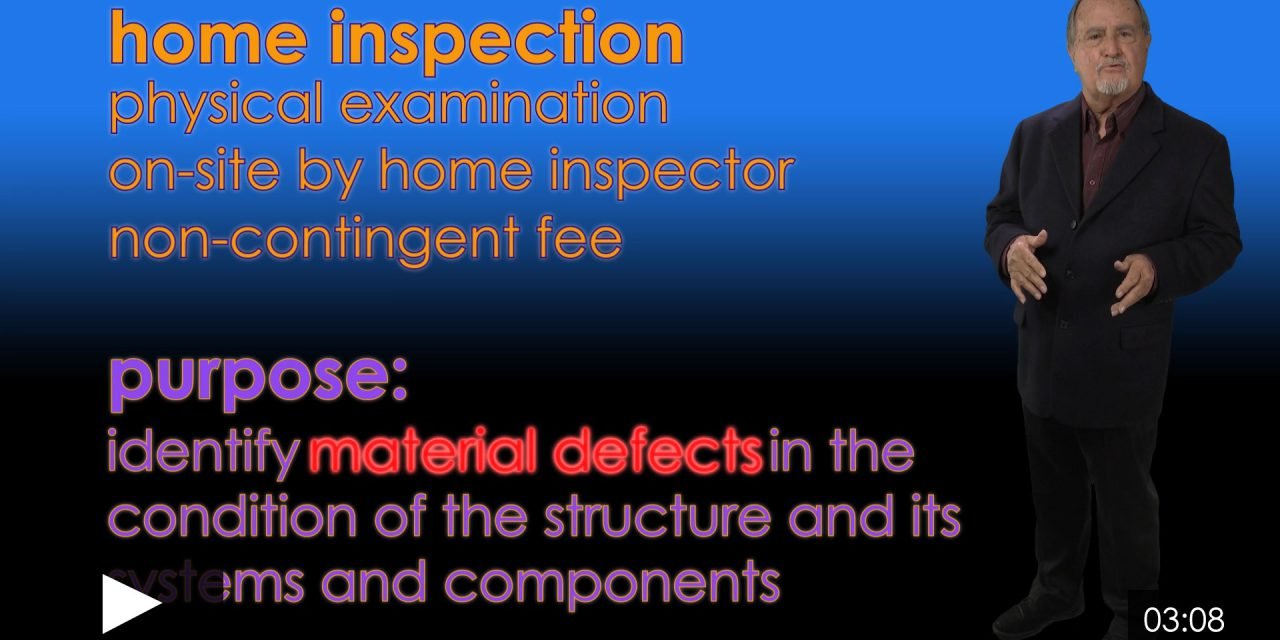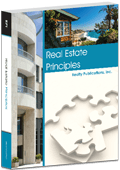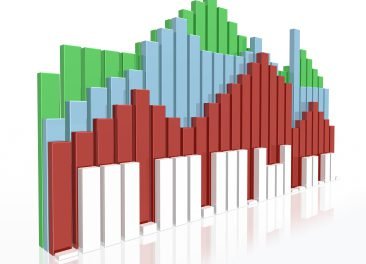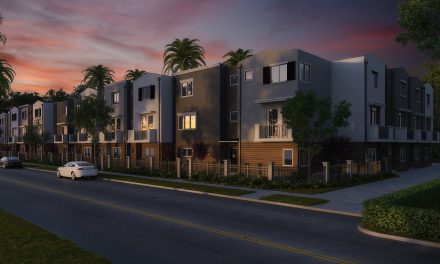This is the final episode in our video series covering the use of a home inspection report to mitigate risks of misrepresentation in the preparation of a seller’s Transfer Disclosure Statement (TDS). For the prior episode, click here.
Non-invasive physical examination
A home inspection is a physical examination conducted on-site by a home inspector. The inspection of a one-to-four unit residential property is performed for a non-contingent fee.
The purpose of the physical examination of the premises is to identify material defects in the condition of the structure and its systems and components. Material defects are conditions which affect the property’s:
- market value;
- desirability as a dwelling;
- habitability from the elements; and
- safety from injury in its use as a dwelling.
Defects are material if they adversely affect the price a reasonably prudent and informed buyer would pay for the property when entering into a purchase agreement. As the report may affect value, the investigation and delivery of the home inspection report to a prospective buyer is legislated to precede a prospective buyer’s offer to purchase. [Business and Professions Code §7195(b)]
The home inspection is a non-invasive examination of the mechanical, electrical and plumbing systems of the dwelling, as well as the components of the structure, such as the roof, ceiling, walls, floors and foundations.
Non-invasive indicates no intrusion into the roof, walls, foundation or soil by dismantling or taking apart the structure which would disturb components or cause repairs to be made to remove the effects of the intrusion. [Bus & P C §7195(a)(1); see RPI Form 130]
The home inspection report (HIR) is the written report prepared by the home inspector which sets forth the findings while conducting the physical examination of the property. The report identifies each system and component of the structure inspected, describes any material defects the home inspector found or suspects, makes recommendations about the conditions observed and suggests any further evaluation needed to be undertaken by other experts. [Bus & P C §7195(c)]
The seller’s agent needs to make sure the report addresses the cause of any defect or code violation found which constitutes a significant defect in the use of the property or cost to remedy the defects. The report will also include suspicions the home inspector might have which need to be clarified by further inspections and reports by others with more expertise.
The agent, or anyone else, may also request that the home inspector conduct an inspection on the energy efficiencies of the property and include the findings in the report. On a request for an energy efficiency inspection, the home inspector will report on items including:
- the R-value of the insulation in the attic, roof, walls, floors and ducts;
- the quantity of glass panes and the types of frames;
- the heating and cooling equipment and fans;
- water heating systems;
- the age of major appliances and the fuel used;
- thermostats;
- energy leakage areas throughout the structure; and
- the solar control efficiency of the windows. [Bus & P C §7195(a)(2)]
The home inspector’s conflicts of interest
The home inspector who prepares a HIR, the company employing the home inspector and any affiliated company may not:
- pay a referral fee or provide for any type of compensation to brokers, agents, owners or buyers for the referral of any home inspection business;
- agree to accept a contingency fee arrangement for the inspection of the report, such as a fee payable based on the home inspector’s findings and conclusions in the report or on the close of a sales escrow;
- perform or offer to perform any repairs on a property which was the subject of a HIR prepared by them within the past 12 months; or
- inspect any property in which they have a financial interest in its sale. [Bus & P C §7197; see RPI e-book Real Estate Principles Chapter 21]
Want to learn more about this topic? Click the image below to download the RPI book cited in this article.















